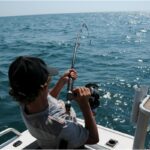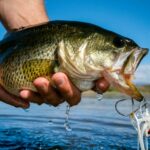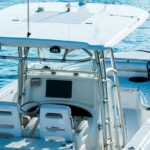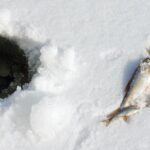Fishing in Montana is as varied as its spectacular topography. Anglers come to Montana to cast off in cold and warm rivers that spring to life in the Northern Rockies or snake through the prairie landscape.

Anyone ready to troll the waters in the Treasure State needs a set of Montana fishing licenses. Here’s the latest catch on valid fishing licenses and where to buy them.
When You Need a Montana Fishing License
Only a valid Montana fishing license allows you to fish legally. That requirement encompasses all kinds of fishing, no matter what part of the state you’re in or whether you’re on a trip with a certified fishing instructor.
Fishing licenses are non-transferable or refundable. Anglers need to apply for a Conservation and Base Fishing License. It enables visitors and residents to catch fish and aquatic invertebrates authorized by the state.
However, the state excludes children under 12 who enjoy ice fishing clinics on Montana’s frozen lakes.
In addition, people fishing in Montana require an Angler Aquatic Invasive Species Prevention Pass (AISPP). The AISPP is an initiative under the direction of the Montana Legislature to battle aquatic invasions.
Further, any launching of a visiting watercraft must obtain a vessel AIS. You’ll likely have to have your craft inspected to prevent invasive aquatic species.
Special clinics and Commercial & Scientific Permits are also subject to fees:
- Aquatic Scientific Collector Permit application: $50
- Commercial fishing pond: $10, renewed yearly
Types of Fishing Licenses in Montana
There are several state-regulated Montana fishing licenses and prevention passes in Montana.
Base Fishing License
To fish in Montana, you’ll need a valid fishing license ($10), a Conservation License pass ($8 for residents), and an invasive species pass ($2 for residents).
Full Season
A full-season Montana fishing license is an excellent option if you want to experience a full fishing season. The season runs from March 1 to November 1. However, the fishing license is good from March to February. Fees have varying ranges:
- MT resident: $21
- MT youth (12-17): $10.50
- MT Senior 62+: $10.50
- Non-MT residents: $100
Short-Term Resident License for 2 Consecutive Days
Alternatively, you could opt for a short-term resident license covering two days, with fees being:
- MT resident: $5
- MT Youth (12-17): $5
- MT Senior 62+: $5
- Non-MT resident: $14/day
Short-Term Nonresident License for 5 Consecutive Days
A short-term, five-day nonresident license is:
- Non-MT resident: $56
That doesn’t include AISPP watercraft fees, Conservation License Pass, or AISPP.
Ensure you understand which fishing district applies to each license to make the most out of limited-day fishing license packages.
- Eastern
- Western
- Central
Further, know the standard regulations specific to each district and familiarize yourself with Montana fishing regulations.
Conservation License
A Conservation License is part of the State Lands Recreation Use Permit law (hunting, fishing, trapping). Applicants must provide proper identification and have the appropriate fishing license (seasonal, daily, etc.) and a Conservation License.
The tiered fees depend on your age and whether or not you’re a resident:
- MT resident: $8
- MT Youth (10-17): $4
- MT Senior 62+: $4
- Non-MT resident: $10
Conservation Licenses are common throughout the USA. Introduced under the American System of Conservation Funding, the program aims to collect funds in a user-pay system and is part of the ‘Cycle of Success.’ Special dispensations for residents with a disability are available.
Applicants can visit a local FWP office or apply online.
Lifetime Fishing License
Visually impaired Montana residents qualify for a lifetime fishing license. The fee is $10 and applicants must meet standard medical certification.
Resident Sportsman License
Resident Sportsman Licenses are popular in many states. For hunting and fishing combination licenses, contact Montana FWP or the hunting & fishing lodge of choice.
Both fishing and hunting regulations in Montana require Base and Conservation Licenses.
Non-resident Combination License
A nonresident combination license in Montana requires the holder to present a hunting license, Conservation License, and base fishing license.
A hunting license is $15. The cost of the fishing license depends on the duration. A standard Conservation License fee of $10 applies to both.
Other Fishing Requirements in Montana
Even a fishing license restricts catching certain fish species.
Bull Trout License

Having a valid Bull Trout Catch Card is the only legal way to catch Bull Trout in Montana. Catch Cards are available by application through the FWP Region 1 office in Kalispell. It’s a good idea to mail or present completed forms well in advance of your fishing outing.
There are only three sanctioned bodies of water that allow fishing with the fee-free Catch Card:
- Hungry Horse Reservoir
- South Fork Flathead River
- Lake Koocanusa
For more information about fishing, contact Montana Fish Wildlife & Parks.
Paddlefish License
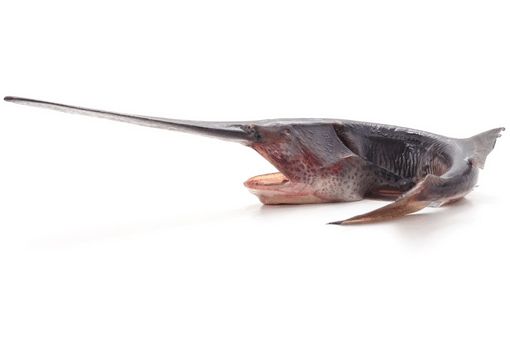
Paddlefish anglers must adhere to the state’s three paddlefish seasons and hold a valid Conservation License and appropriate Montana fishing licenses. Anglers can apply as singles or as a group (up to five persons) and will only have the option to fish in one area. It’s a good idea to check paddlefish regulations annually to stay updated on any changes in requirements.
Resident paddlefish anglers and non-resident paddlefish anglers must complete the correct form.
Any anglers that catch a paddlefish must report to the FWP within 48 hours. The Paddlefish Harvest Reporting Line is (877) FWP-WILD or 1 (406) 444-0356.
Designated paddlefish locations are:
- White Harvest Tag for Upper Missouri River from Fort Peck Dam to Fort Benton
- Yellow Harvest Tag for Yellowstone River and Missouri River downstream of Fort Peck Dam
- Blue Harvest Tag for Fort Peck Dredge Cut archery-only season
The fees for paddlefish tags are set at:
- MT Residents tag $6.50 and drawing fee $5.00
- Non-MT resident tag $15 and drawing fee $5.00
Angler Aquatic Invasive Species Prevention Pass
Montana legislature and residents work hard to conserve and protect the state’s natural habitat, including the most popular fishing spots. The Prevention Pass is one means of doing so, as it’s designed to prevent the proliferation of invasive aquatic species:
- MT Residents need to obtain a $2 pass to complement their fishing license
- Non-residents pay a nominal fee of $7.50
- Youths under 15 do not require an AISPP
Donations from non-anglers who want to purchase an AISPP are appreciated and encouraged by state authorities.
Vessel Aquatic Invasive Species Prevention Pass
Invasive species are a severe problem. Given that, Montana requires visiting watercraft to pass an inspection for aquatic invasive species. You’ll be expected to stop at all inspection stations en route as listed here. These rules apply to ballast or bladder boats, wakeboards, and wake-surfing boats.
Inspections completed in Idaho or Wyoming will satisfy state regulations. Non-resident water vessels must have a Vessel AIS Prevent Pass, which you can obtain from FWP offices or online.
Typical fees:
- Motorized vessel fee $30
- Non-motorized vessel fee $10
Keep proof of receipt electronically or on paper. All AISPP for vessels are non-transferable and expire annually on December 31.
Standard Regulations
Montana strictly enforces standard regulations. These apply to fishing licenses in the three designated regional areas of Eastern, Western, and Central. Anglers must adhere to general catch and keep limits at all times.
Unique exceptions apply to trout species, paddlefish, and regulations that govern resident, indigenous, and non-resident anglers.
The Central, Eastern, and Western District Standard Regulations are unique to each area and limits on catches and species vary. Failure to meet these standards results in fines.
Standard Regulations also classify the basic and Conservation Licenses by age restrictions for residents and non-residents. Further, the Standard Regulations panel controls the Aquatic Invasive Species Prevention Pass (AISPP).
Standard Regulations govern all bodies of water in Montana and apply to all-season fishing licenses and fly fishing.
Frequently Asked Questions
You know plenty about Montana fishing licenses, but you might still have questions about fishing in Big Sky Country.
Are there penalties for fishing without a license in Montana?
Yes, there are penalties ranging from $50 to $1000 for failing to meet the guidelines and not having the appropriate fishing licenses. Fines can also lead to imprisonment in the county jail.
What types of fish can be caught in Montana?
Montana has approximately 31 game fish and 59 non-game varieties. Some are endangered or threatened. The state is home to trout, pike, perch, salmon, catfish, paddlefish, and numerous other species.
When is the best time to fish in Montana?
Montana fishing season is best enjoyed during warmer months from May to mid-September. However, some anglers feel they experience ideal fly-fishing in October. An all-season fishing license is recommended if you want to experience all the state has to offer throughout the year. The official season runs from March 1 to November 1.
Where should you go fishing in Montana?
That all depends on who you ask and what you’re fishing for. Some great spots the whole family can enjoy are Bozeman, Madison, Bighorn, and Yellowstone, among several excellent fishing rivers.
Parting Thoughts
There’s no greater joy than experiencing nature with family or while quietly fishing. However, if you want to fish in Big Sky Country, you’ll need a Montana fishing license and Conservation License.
Getting the licenses might sound like a lot of work, but it’s straightforward to obtain them. And, once you have them and are familiar with the state’s fishing regulations, you’ll be a step closer to getting the catch of your dreams, whether you’re fly fishing or angling.
- Do You Need An Indicator For Nymph Fishing? - November 16, 2023
- Fishing Safety Tips For Families - September 25, 2023
- What Is The Best Time To Night Fish At A Lake? - September 18, 2023



